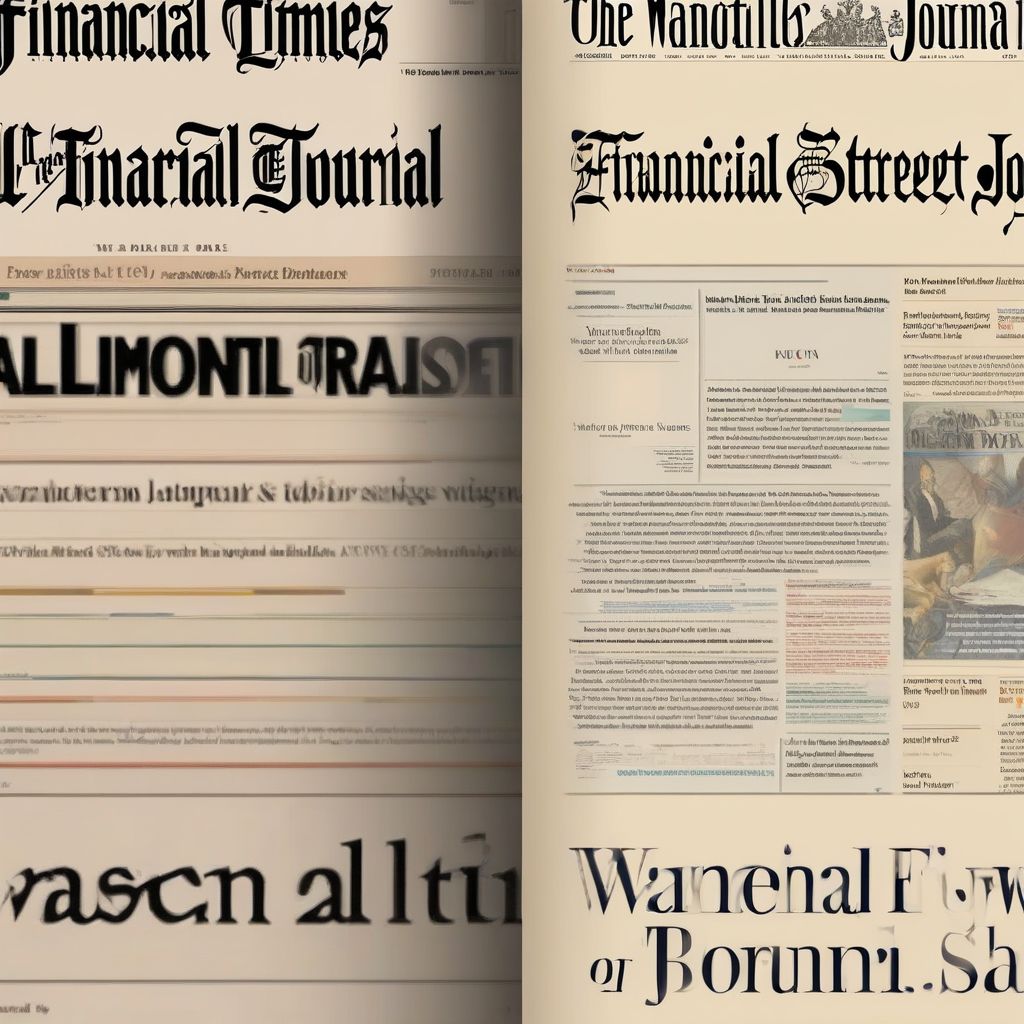Financial Times vs. WSJ: A Detailed Comparison for Investors
When it comes to staying informed about finance and investing, choosing the right news source is crucial. Two names consistently top the list: The Financial Times (FT) and The Wall Street Journal (WSJ). Both are esteemed publications with global reputations, but they cater to slightly different audiences and offer unique strengths. So, Financial Times vs. WSJ – which one is right for you?
This article delves into a comprehensive comparison of these financial powerhouses, examining their content, target audiences, and subscription models to help you make an informed decision.
Understanding the Players
What is the Financial Times (FT)?
Founded in 1888, the FT, with its iconic salmon-pink pages, has a rich history of providing in-depth coverage of global financial markets and business news. Known for its authoritative analysis and international perspective, the FT has become a staple for senior business executives, policymakers, and seasoned investors.
What is The Wall Street Journal (WSJ)?
Established in 1889, the WSJ is equally renowned, particularly for its comprehensive coverage of the U.S. economy and financial markets. Beyond Wall Street, it offers insightful reporting on a wide range of topics, including politics, technology, and personal finance, making it a popular choice for a broader audience, including individual investors and business professionals.
 Financial Times and Wall Street Journal logos
Financial Times and Wall Street Journal logos
Financial Times vs. WSJ: Key Differences
While both publications excel in financial journalism, several key distinctions set them apart:
1. Geographic Focus:
- FT: Maintains a strong global outlook, with extensive coverage of European and Asian markets, making it invaluable for investors interested in international opportunities and geopolitical analysis.
- WSJ: While offering some international news, its primary focus remains on U.S. markets and business, providing comprehensive coverage of the American economic landscape.
2. Target Audience:
- FT: Caters to a more niche audience of experienced investors, C-suite executives, and individuals involved in international business and finance.
- WSJ: Appeals to a broader readership, including individual investors, business professionals, and those seeking a mix of financial news with U.S.-centric coverage of general news and politics.
3. Content and Style:
- FT: Known for its in-depth analysis, longer-form articles, and a more formal tone. It excels in providing insightful commentary on global macroeconomic trends, geopolitical events, and their impact on financial markets.
- WSJ: Emphasizes concise reporting, shorter articles, and a more accessible writing style. It provides strong coverage of individual companies, earnings reports, and market-moving news, making it valuable for day-to-day investment decisions.
4. Subscription Costs and Models:
- FT: Generally considered more expensive, with subscription packages tailored to different needs.
- WSJ: Offers various subscription options, often with introductory deals and a wider range of price points.
Which Publication is Right for You?
The best choice between the FT and WSJ depends on your individual needs and preferences:
Choose the Financial Times if:
- You are a seasoned investor or business professional seeking in-depth analysis of global markets and geopolitics.
- You value a global perspective on financial news and its implications for international business.
- You prefer longer-form articles and a more formal writing style.
Choose The Wall Street Journal if:
- You are an individual investor or business professional seeking comprehensive coverage of U.S. markets and companies.
- You prefer a balance of financial news with general news and political coverage, particularly focused on the United States.
- You appreciate concise reporting, shorter articles, and a more accessible writing style.
Beyond the Headlines: Other Factors to Consider
- Digital Experience: Both publications offer robust websites and mobile apps, providing convenient access to news and analysis on the go.
- Data and Tools: Both offer data tools, charts, and interactive features to enhance market research and investment analysis.
- Podcasts and Multimedia: FT and WSJ provide podcasts and multimedia content to cater to different learning styles and preferences.
Making an Informed Decision
Ultimately, the “best” publication is subjective. Exploring free trials or introductory offers from both the FT and WSJ can be invaluable. This hands-on experience will allow you to explore their content, features, and user experience firsthand, helping you determine which publication best aligns with your financial information needs and investment goals.
Keep Learning, Keep Growing
Whether you choose the Financial Times, The Wall Street Journal, or both, remember that staying informed is an ongoing process. Explore additional resources, consider alternative perspectives, and continuously seek knowledge to navigate the complexities of finance and investing effectively.



